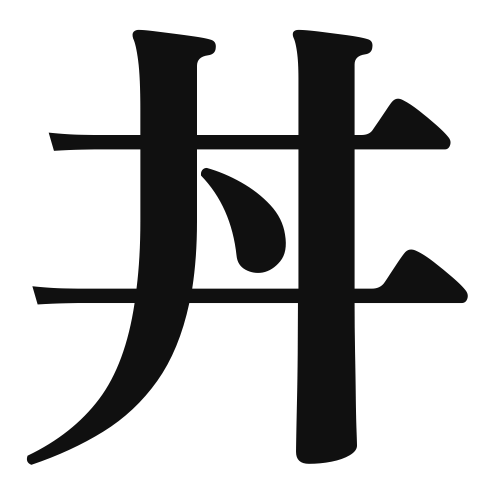1. Overview of Meaning
The kanji “丼” (donburi) refers to a bowl, specifically a deep bowl used for serving rice dishes topped with various ingredients. It is commonly associated with Japanese cuisine, where rice is served in a bowl with meat, vegetables, or other toppings.
2. Formation and Radicals
Formation of the Kanji: The kanji “丼” is a combination of two elements. It is a compound character that represents a bowl (丼) and is derived from the character for “bowl” (皿). The character visually resembles a bowl with a lid, emphasizing its function as a container for food.
Radical: The radical for “丼” is “丷” (bowl), which indicates its association with food and serving dishes.
3. Examples of Usage
Common Words and Phrases: Some common terms that include “丼” are:
- 牛丼 (gyudon) – beef bowl
- 親子丼 (oyakodon) – chicken and egg bowl
- 天丼 (tendon) – tempura bowl
Example Sentences in Daily Conversation:
- 今晩は牛丼を作ります。 (I will make gyudon for dinner.)
- 親子丼が大好きです。 (I love oyakodon.)
4. Synonyms and Antonyms
Similar Kanji: A similar kanji is “皿” (sara), which means “plate.” While both refer to dishes used for serving food, “皿” typically refers to a flat dish, whereas “丼” refers to a deep bowl.
Opposite Kanji: There isn’t a direct antonym for “丼,” but “空” (kara), meaning “empty,” can be considered an opposite in the context of serving food, as a bowl is typically filled with food.
5. Cultural and Historical Background
Connection to Japanese Culture: The concept of “丼” is deeply rooted in Japanese cuisine, where rice is a staple food. Various types of donburi dishes reflect regional ingredients and cooking styles, showcasing the diversity of Japanese culinary traditions.
Proverbs and Idioms: While there may not be specific proverbs directly related to “丼,” the idea of sharing a meal from a bowl can symbolize togetherness and family in Japanese culture.
